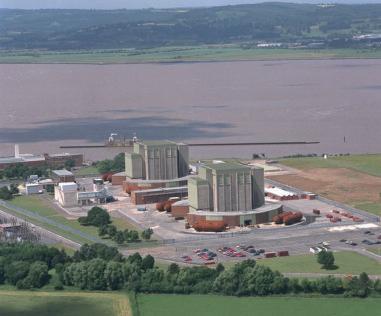
2 minute read
GLOUCESTERSHIRE BIDS FOR FUSION ENERGY POWER PLANT

By Ian Mean, Gloucestershire
director of Business West and a board member of GFirst LEP
The West of England could become home to a technology park and power plant generating climate-friendly electricity following the submission of a bid proposal to government to host a fusion power plant here.
If successful, the bid will bring billions of pounds of investment and thousands of jobs to the region.
A partnership of local authorities, development bodies, landowners and the training and education sector have identified land in Gloucestershire and South Gloucestershire for this potentially groundbreaking project, and has submitted it into a national selection process
Fusion is the power that drives our sun, forcing hydrogen ions together to produce huge amounts of energy.
I hesitate to say this is not my description but that of Professor Tom Scott, an expert on nuclear fusion at the University of Bristol and director of the South West Nuclear Hub on which Business West is a partner through Nuclear South West.
We are a world leader in nuclear fusion, and now the UK Atomic Energy Authority is seeking to harness its power.
The technology is called STEP (Spherical Tokamak for Energy Production), and the government aims to support it with a key architect of the bid, said: “Many communities will vie for the opportunity to host this project and the South West Nuclear Hub believes our region is well placed. If you want to build a fusion power station, you need people and a supply chain that know how to do it.
£220 million over the next five years. The aim is to build the world’s first fusion power station by the 2040s.
The exciting bit is here in Gloucestershire. We hope that our Western Gateway partnership bid will lead to that power plant.
The plant and associated businesses, training and technical facilities would be built on land at two, near-adjacent, former nuclear power station sites at Oldbury-onSevern and Berkeley.
It would be expected to be operational by 2040, with much of the supporting ecosystem being developed in the next two to 10 years.
The bid to build was submitted on March 30 and we all have our fingers crossed that our bid will pass the “showstopper assessment” in May. And why shouldn’t it?
Professor Scott, RAEng Professor of Materials at the University of Bristol and
“The South West is the only region in the UK with this capability due to the Hinkley Point C project in Somerset and previously, Berkeley and Oldbury nuclear power stations,” he added.
“This region has unique resources to make STEP a locally sustainable proposition – from the redundant Magnox power station sites across the region to the steel foundries of South Wales and the lithium extraction ventures in Cornwall.
“This is nationally unique”.
If you want to build a power plant that runs at temperatures hotter than the sun, you need experts. And we have them.
At Barnwood in Gloucester, experts operate out of EDF Energy’s fleet headquarters overseeing the operation of our existing nuclear power stations which are the only high temperature reactors in the world.
What has impressed me about the bid is how quickly all the local authorities have come together as one to back it.
And our MPs are lining up behind it too — their support at Westminster is going to be vital in the lobbying battle with government.
In a letter to Andy Bates, Innovation Lead for Nuclear South West at Business West, Mark Harper, the Forest of Dean’s MP and chair of the South West Group of Conservative MPs, said: “There is strong support for the project among South West MPs.”
He continued: “As Parliamentarians, we recognise that securing a site in the South West will bring much-needed positive benefits for all constituencies and that it will hopefully be a major contributor to a net zero carbon energy future – a key part of the government’s ambition to build back better and greener after the pandemic.”


